We made it over to the Reed's in Forest Lakes about 40 minutes later. The swarm had completely settled and was quietly going about its business sending out nesting site scouts.
This swarm was only about 10-15 feet up, easily reached with the ladder. But it was awkwardly located on two crossing branches, and was also surrounded by branches, one of which we had to prune. After wetting down the swarm, we shook the branches until most of the bees had fallen into our swarm box. It wasn't a particularly clean operation though, and we put a lot of bees in the air. Our onlookers commented at one point that it looked like we were taking a shower with bees.
We could only hope we got the queen in the box. We placed it at the base of the tree and watched for a bit. The general flow of bees was into the box. The remains of the cluster of bees up on the branch grew a little at first, but then began to dwindle. So we were pretty sure we had the queen in the swarm box. We decided to leave it there for the rest of the afternoon and let all the bees find their way in.
I returned after dark to retrieve the box. The kids, being excellent guardians, had put this sign up next to the swarm box. The rest of the photos are here.











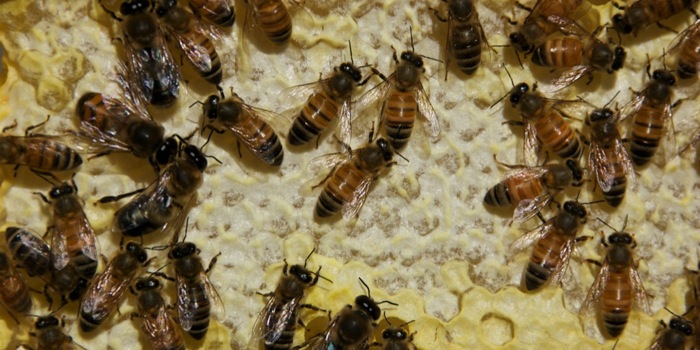









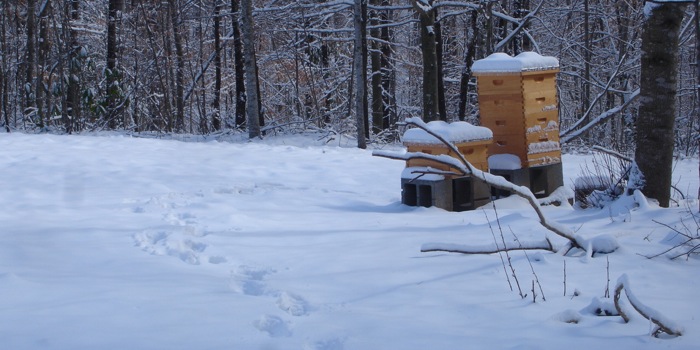

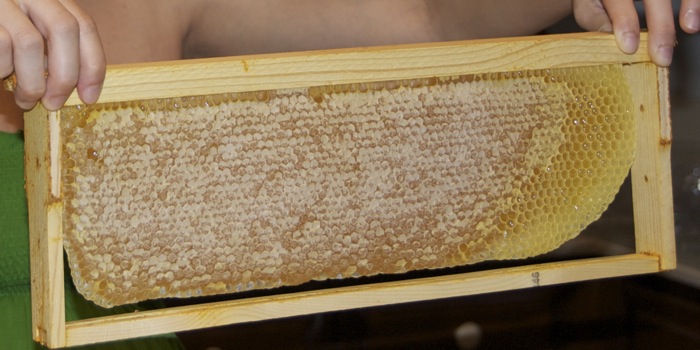

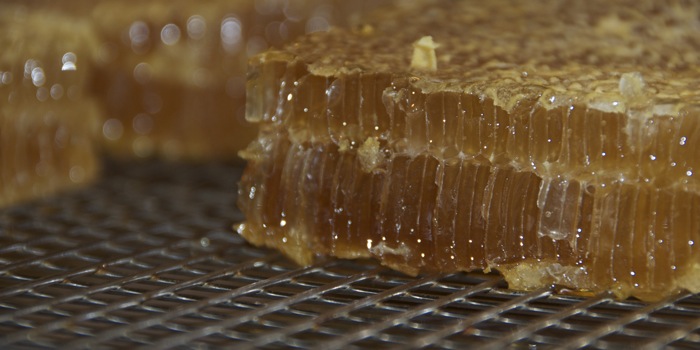



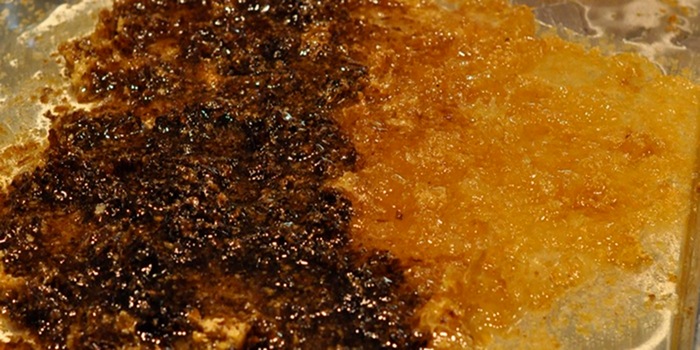

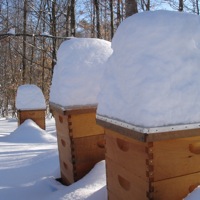 Honeybees survive by acquisition, defense, and efficient
allocation of various resources, to enable successful
overwintering and reproduction. This requires
sophisticated decision making, akin to that needed by
manufacturing firms, and beyond the capability of a single bee's
brain. But when each bee follows simple
sets of rules, the aggregate effect creates an emergent
intelligence for the colony as a whole, able to react to a
dynamic environment and achieve complex optimizations.
Honeybees survive by acquisition, defense, and efficient
allocation of various resources, to enable successful
overwintering and reproduction. This requires
sophisticated decision making, akin to that needed by
manufacturing firms, and beyond the capability of a single bee's
brain. But when each bee follows simple
sets of rules, the aggregate effect creates an emergent
intelligence for the colony as a whole, able to react to a
dynamic environment and achieve complex optimizations.
 We're interested in understanding some of the
mathematical principles underlying the colony
intelligence of honeybees. We meet roughly every other
week from October through April to discuss articles
from the scientific literature on honeybees. We also
do some mathematical modeling of specific honeybee
optimization behaviors. Along the way, we learn some
aspects of honeybee biology and ecology, as well as
the history and practice of beekeeping.
We're interested in understanding some of the
mathematical principles underlying the colony
intelligence of honeybees. We meet roughly every other
week from October through April to discuss articles
from the scientific literature on honeybees. We also
do some mathematical modeling of specific honeybee
optimization behaviors. Along the way, we learn some
aspects of honeybee biology and ecology, as well as
the history and practice of beekeeping.
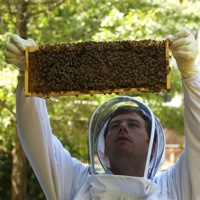 We're also interested in getting to know each other,
and getting to know the bees. In the Fall and Spring, we
meet regularly at Professor Gromoll's home for
hands-on activities in the apiary. This includes an
opening breakfast in the Fall, and a dinner in the
Spring. We'll also start a new honeybee colony for the
group, and take a field trip to a larger apiary in the
area.
We're also interested in getting to know each other,
and getting to know the bees. In the Fall and Spring, we
meet regularly at Professor Gromoll's home for
hands-on activities in the apiary. This includes an
opening breakfast in the Fall, and a dinner in the
Spring. We'll also start a new honeybee colony for the
group, and take a field trip to a larger apiary in the
area.







No comments:
Post a Comment